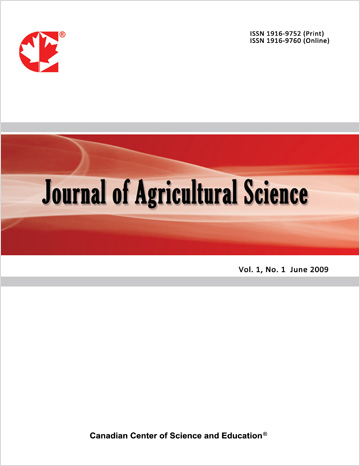Improvement of Feed Intake, Digestibility and Lactation Performance of Hassani Dairy Goats by Supplementing Sorghum Stover-Based Diets With Alfalfa and Elephant Grass
- Tekleab Kidanemariam Ghebregziabiher
- Vincent Mwashi
- Getachew Gebru Tegegn
- Mengistu Russom Araya
- Mathew Gitau Gicheha
- Isaac Maina Osuga
Abstract
Goat production plays a vital role in food security, employment creation, and economic development among other socio-economic roles. Goats are highly adaptable to many environmental conditions including the arid and semi-arid regions which are characterised by low quality and insufficient pastures and browse especially during the dry seasons leading to low animal productivity. Many a times in the tropics, goat production is practised within smallholder mixed farming systems. This implies that households respond to the low quality and insufficient goat feed resources with crop residues supplementation. Additionally, households have also established drought tolerant forages in the farm systems. In order to optimize on the scarce feed resources available for goat production in the tropics, this study sought to quantify the effect of feeding high yielding goat breed (Hassani dairy goats) one of most common crop residue (sorghum stover) supplemented with a naturally occurring protein rich forage; Acacia tortilis pods, alfalfa or elephant grass on feed intake, digestibility, body weight change, milk yield and milk composition on Hassani dairy goats in Gash-Barka region, Eritrea. Four dietary treatment groups; T1 (80% Sorghum stover + 20% Acacia tortilis pods meal), T2 (50% Sorghum stover + 20% Alfalfa + 30% Elephant grass), T3 (50% Sorghum stover + 30% Alfalfa + 20% Elephant grass) and T4 (50% Sorghum stover + 25% Alfalfa + 25% Elephant grass) were tested. A completely randomized design with 4 dietary treatment groups and 6 replicates was used. A total of 24 lactating Hassani dairy goats were randomly assigned to one of the four dietary treatments. Results indicated that the chemical composition of the treatment diets varied significantly across treatment groups with crude protein (CP), and ether extract (EE) contents being highest in diet (T4) while dry matter (DM), organic matter (OM), neutral detergent fibre (NDF) and acid detergent fibre (ADF) and cellulose were highest in diet (T1). The hemicellulose content was similar across all the treatment diets. Goats fed diet T4 recorded the highest (p < 0.001) DM feed intake (1.178 kg DM/day) compared to other treatment groups. Additionally, DM, OM, CP, NDF, ADF, hemicellulose and cellulose nutrient digestibility was significantly (p < 0.05) improved in T4 diet. Generally, the average daily weight gain did not significantly (p > 0.05) differ among treatment diets. Notably, goats fed diet T4 recorded significantly (p < 0.001) higher milk yield (510.5 ml/day) compared to those fed diet T1 (315.2 ml/day). Milk composition in terms of protein, fat, solids-not-fat, and lactose did not differ significantly between treatments. These findings suggest that supplementing sorghum stover with a balanced blend of alfalfa and elephant grass enhances dairy goat productivity under smallholder intensive production systems in semi-arid regions in Eritrea.
- Full Text:
 PDF
PDF
- DOI:10.5539/jas.v17n11p113
Journal Metrics
- h-index: 67
- i10-index: 839
- WJCI (2023): 0.884
- WJCI Impact Factor (2023): 0.196
Index
- AGRICOLA
- AGRIS
- BASE (Bielefeld Academic Search Engine)
- Berkeley Library
- CAB Abstracts
- ChronosHub
- CiteSeerx
- CNKI Scholar
- Copyright Clearance Center
- CrossRef
- DESY Publication Database
- DTU Library
- e-Library
- EBSCOhost
- EconPapers
- Elektronische Zeitschriftenbibliothek (EZB)
- EuroPub Database
- Excellence in Research for Australia (ERA)
- Google Scholar
- Harvard Library
- IDEAS
- iDiscover
- Jisc Library Hub Discover
- JournalTOCs
- KindCongress
- LIVIVO (ZB MED)
- LOCKSS
- Max Planck Institutes
- Mendeley
- MIAR
- Mir@bel
- NLM Catalog PubMed
- Norwegian Centre for Research Data (NSD)
- Open J-Gate
- OUCI
- PKP Open Archives Harvester
- Polska Bibliografia Naukowa
- Qualis/CAPES
- RefSeek
- RePEc
- ROAD
- ScienceOpen
- Scilit
- SCiNiTO
- Semantic Scholar
- SHERPA/RoMEO
- Southwest-German Union Catalogue
- Standard Periodical Directory
- Stanford Libraries
- SUDOC
- Swisscovery
- Technische Informationsbibliothek (TIB)
- Trove
- UCR Library
- Ulrich's
- UniCat
- Universe Digital Library
- WorldCat
- WRLC Catalog
- Zeitschriften Daten Bank (ZDB)
Contact
- Anne BrownEditorial Assistant
- jas@ccsenet.org
